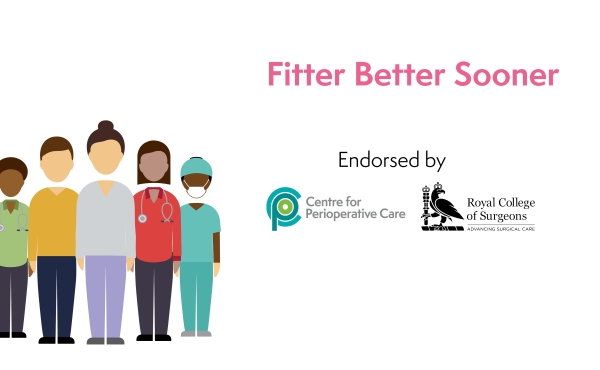Would you enter for a marathon without training for it? Why patients can benefit from a preparation list

Lawrence Mudford has had a 38-year healthcare career working as a dentist and dental educator within both primary and secondary care. This has included serving on the board of the Faculty of General Dental Practice and as a member of the General Dental Council.
Have you ever wondered what the difference is between waiting and preparing? A dictionary definition gives some clarity:
- Waiting - the action of staying where you are or delaying action until a particular time or event.
- Preparation - something that is done to get ready for an event or undertaking.
Here in the UK, for many years, the NHS has been focused on the statistics surrounding waiting times; their length in weeks or months; the numbers associated with that length and the speed in which the numbers rise or fall. As a consequence, patients can get caught up in these statistics - and become numbers themselves - just focused on waiting!
So, let's think out of the box for a moment - and look at the benefits of changing the concept of a 'waiting' time, one that is passive and static, to one that can genuinely be seen as active, and which adds benefits to a patients recovery following surgery. In other words, a time of 'preparation' prior to a surgical event.
Patient's needs
When a patient is confronted by the news that they require surgery, there are many questions that can come to mind - often including 'How quickly can I get the operation carried out?' What if we can change this mindset to one of - "What can I do in the time before my surgery, to get fitter for the procedure and my recovery?"
Using my running a marathon analogy from the title of this blog, there are many similarities to preparation for a major sporting event and major surgery. Both have a large impact on the body and require some adjustments to lifestyle, so that a successful outcome can be expected.
This pre-op/pre-sporting time can be used to get into training - increasing exercise to get fitter and build up stamina, reducing or stopping smoking, reducing alcohol intake, reviewing nutritional needs and preparing mentally for the coming ordeal.
And, of course, to support us in our marathon training, we require our trainers and support staff. We need a structure within Healthcare to make this 'Preparation' the norm within the NHS. So, we are starting to focus on prehabilitation - which is doing things to improve and enhance a patient's ability to undergo the stresses of surgery.
Structural change
Fortunately, we may be in one of the most encouraging and opportunistic times of change within Healthcare for a decade. Priorities and operational planning guidance align with the NHS Long Term Plan for efficiency and transformation - and patients, we are reminded repeatedly, are at the centre of that transformation.
And, of course, in the wake of the Covid-19 pandemic, coupled with the increasing number of people awaiting a hospital procedure (4.7 million at the time of writing this blog), we have a cohort of patients who are older, have co-morbidities, are frailer, more isolated and may well have deteriorated in their health, and expectations, by the time they are called up for an operation.
'Preparation lists' neatly fit into the structural changes that are becoming a talking point as part of the current innovations in healthcare. And the benefits, both to patients and healthcare professionals, are becoming more evident. There is therefore, a new focus on the benefits of prehabilitation.
Benefits
These are some of the benefits that are evidenced from research around prehabilitation, which can be enhanced by adopting this new focus on preparation lists:
- Improved patients wellbeing
- Improved psychological outcomes
- Fewer complications
- Increased physical fitness
- Decreased hospital length of stay
- Fewer hospital readmissions
- Lower healthcare costs
These benefits are all achieved by patients getting fitter and by patients using their 'waiting' time to actively prepare for their surgery. These changes sound like a win-win scenario on every level.
In the next two blogs, we will expand on the benefits of a 'preparation list' as well as some of the challenges. And in so doing, we will start to recognise the 'patient voice' within perioperative care and continue our work towards holistic patient care for all patients in the UK who undergo a medical procedure.



